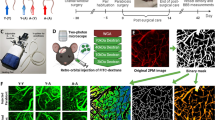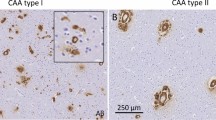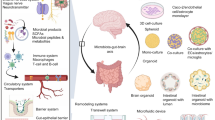Abstract
Receptor- and adsorptive-mediated transport through brain endothelial cells (BEC) of the blood-brain barrier (BBB) involves a complex array of subcellular vesicular structures, the endo-lysosomal system. It consists of several types of vesicles, such as early, recycling, and late endosomes, retromer-positive structures, and lysosomes. Since this system is important for receptor-mediated transcytosis of drugs across brain capillaries, our aim was to characterise the endo-lysosomal system in BEC with emphasis on their interactions with astrocytes. We used primary porcine BEC in monoculture and in co-culture with primary rat astrocytes. The presence of astrocytes changed the intraendothelial vesicular network and significantly impacted vesicular number, morphology, and distribution. Additionally, gene set enrichment analysis revealed that 60 genes associated with vesicular trafficking showed altered expression in co-cultured BEC. Cytosolic proteins involved in subcellular trafficking were investigated to mark transport routes, such as RAB25 for transcytosis. Strikingly, the adaptor protein called AP1-μ1B, important for basolateral sorting in epithelial cells, was not expressed in BEC. Altogether, our data pin-point unique features of BEC trafficking network, essentially mapping the endo-lysosomal system of in vitro BBB models. Consequently, our findings constitute a valuable basis for planning the optimal route across the BBB when advancing drug delivery to the brain.






Similar content being viewed by others
References
Cecchelli R, Berezowski V, Lundquist S, Culot M, Renftel M, Dehouck MP, Fenart L (2007) Modelling of the blood-brain barrier in drug discovery and development. Nat Rev Drug Discov 6(8):650–661. https://doi.org/10.1038/nrd2368
Toth A, Veszelka S, Nakagawa S, Niwa M, Deli MA (2011) Patented in vitro blood-brain barrier models in CNS drug discovery. Recent Pat CNS Drug Discov 6(2):107–118
Helms HC, Abbott NJ, Burek M, Cecchelli R, Couraud PO, Deli MA, Forster C, Galla HJ et al (2016) In vitro models of the blood-brain barrier: an overview of commonly used brain endothelial cell culture models and guidelines for their use. J Cereb Blood Flow Metab 36(5):862–890. https://doi.org/10.1177/0271678X16630991
Salameh TS, Banks WA (2014) Delivery of therapeutic peptides and proteins to the CNS. Adv Pharmacol 71:277–299. https://doi.org/10.1016/bs.apha.2014.06.004
Herve F, Ghinea N, Scherrmann JM (2008) CNS delivery via adsorptive transcytosis. AAPS J 10(3):455–472. https://doi.org/10.1208/s12248-008-9055-2
Freskgard PO, Urich E (2017) Antibody therapies in CNS diseases. Neuropharmacology 120:38–55. https://doi.org/10.1016/j.neuropharm.2016.03.014
Preston JE, Joan Abbott N, Begley DJ (2014) Transcytosis of macromolecules at the blood-brain barrier. Adv Pharmacol 71:147–163. https://doi.org/10.1016/bs.apha.2014.06.001
Villasenor R, Kalaidzidis Y, Zerial M (2016) Signal processing by the endosomal system. Curr Opin Cell Biol 39:53–60. https://doi.org/10.1016/j.ceb.2016.02.002
Palfy M, Remenyi A, Korcsmaros T (2012) Endosomal crosstalk: meeting points for signaling pathways. Trends Cell Biol 22(9):447–456. https://doi.org/10.1016/j.tcb.2012.06.004
Stoops EH, Caplan MJ (2014) Trafficking to the apical and basolateral membranes in polarized epithelial cells. J Am Soc Nephrol: JASN 25(7):1375–1386. https://doi.org/10.1681/ASN.2013080883
Huotari J, Helenius A (2011) Endosome maturation. EMBO J 30(17):3481–3500. https://doi.org/10.1038/emboj.2011.286
Lajoie JM, Shusta EV (2015) Targeting receptor-mediated transport for delivery of biologics across the blood-brain barrier. Annu Rev Pharmacol Toxicol 55:613–631. https://doi.org/10.1146/annurev-pharmtox-010814-124852
Dempsey GP, Bullivant S, Watkins WB (1973) Endothelial cell membranes: polarity of particles as seen by freeze-fracturing. Science 179(4069):190–192
Hellinger E, Veszelka S, Toth AE, Walter F, Kittel A, Bakk ML, Tihanyi K, Hada V et al (2012) Comparison of brain capillary endothelial cell-based and epithelial (MDCK-MDR1, Caco-2, and VB-Caco-2) cell-based surrogate blood-brain barrier penetration models. Eur J Pharm Biopharm 82(2):340–351. https://doi.org/10.1016/j.ejpb.2012.07.020
Mayor S, Presley JF, Maxfield FR (1993) Sorting of membrane components from endosomes and subsequent recycling to the cell surface occurs by a bulk flow process. J Cell Biol 121(6):1257–1269
Maxfield FR, McGraw TE (2004) Endocytic recycling. Nat Rev Mol Cell Biol 5(2):121–132. https://doi.org/10.1038/nrm1315
Klinger SC, Siupka P, Nielsen MS (2015) Retromer-mediated trafficking of transmembrane receptors and transporters. Membranes (Basel) 5(3):288–306. https://doi.org/10.3390/membranes5030288
Sollner T, Whiteheart SW, Brunner M, Erdjument-Bromage H, Geromanos S, Tempst P, Rothman JE (1993) SNAP receptors implicated in vesicle targeting and fusion. Nature 362(6418):318–324. https://doi.org/10.1038/362318a0
Seaman MN, McCaffery JM, Emr SD (1998) A membrane coat complex essential for endosome-to-Golgi retrograde transport in yeast. J Cell Biol 142(3):665–681
Folsch H, Ohno H, Bonifacino JS, Mellman I (1999) A novel clathrin adaptor complex mediates basolateral targeting in polarized epithelial cells. Cell 99(2):189–198
Alvarez JI, Katayama T, Prat A (2013) Glial influence on the blood brain barrier. Glia 61(12):1939–1958. https://doi.org/10.1002/glia.22575
Rubin LL, Hall DE, Porter S, Barbu K, Cannon C, Horner HC, Janatpour M, Liaw CW et al (1991) A cell culture model of the blood-brain barrier. J Cell Biol 115(6):1725–1735
Hayashi Y, Nomura M, Yamagishi S, Harada S, Yamashita J, Yamamoto H (1997) Induction of various blood-brain barrier properties in non-neural endothelial cells by close apposition to co-cultured astrocytes. Glia 19(1):13–26
Sobue K, Yamamoto N, Yoneda K, Hodgson ME, Yamashiro K, Tsuruoka N, Tsuda T, Katsuya H et al (1999) Induction of blood-brain barrier properties in immortalized bovine brain endothelial cells by astrocytic factors. Neurosci Res 35(2):155–164
Haseloff RF, Blasig IE, Bauer HC, Bauer H (2005) In search of the astrocytic factor(s) modulating blood-brain barrier functions in brain capillary endothelial cells in vitro. Cell Mol Neurobiol 25(1):25–39
Worzfeld T, Schwaninger M (2016) Apicobasal polarity of brain endothelial cells. J. Cereb Blood Flow Metab 36(2):340–362. https://doi.org/10.1177/0271678X15608644
Prat A, Biernacki K, Wosik K, Antel JP (2001) Glial cell influence on the human blood-brain barrier. Glia 36(2):145–155. https://doi.org/10.1002/Glia.1104
Ezan P, Andre P, Cisternino S, Saubamea B, Boulay AC, Doutremer S, Thomas MA, Quenech'du N et al (2012) Deletion of astroglial connexins weakens the blood-brain barrier. J Cereb Blood Flow Metab 32(8):1457–1467. https://doi.org/10.1038/jcbfm.2012.45
Dehouck MP, Meresse S, Delorme P, Fruchart JC, Cecchelli R (1990) An easier, reproducible, and mass-production method to study the blood-brain barrier in vitro. J Neurochem 54(5):1798–1801
Hoheisel D, Nitz T, Franke H, Wegener J, Hakvoort A, Tilling T, Galla HJ (1998) Hydrocortisone reinforces the blood-brain barrier properties in a serum free cell culture system. Biochem Biophys Res Commun 244(1):312–316. https://doi.org/10.1006/bbrc.1997.8051
Patabendige A, Abbott NJ (2014) Primary porcine brain microvessel endothelial cell isolation and culture. Curr Protoc Neurosci 69(3.27):21–17. https://doi.org/10.1002/0471142301.ns0327s69
Igarashi Y, Utsumi H, Chiba H, Yamada-Sasamori Y, Tobioka H, Kamimura Y, Furuuchi K, Kokai Y et al (1999) Glial cell line-derived neurotrophic factor induces barrier function of endothelial cells forming the blood-brain barrier. Biochem Biophys Res Commun 261(1):108–112. https://doi.org/10.1006/bbrc.1999.0992
Abbott NJ, Ronnback L, Hansson E (2006) Astrocyte-endothelial interactions at the blood-brain barrier. Nat Rev Neurosci 7(1):41–53. https://doi.org/10.1038/nrn1824
Neuhaus W, Gaiser F, Mahringer A, Franz J, Riethmuller C, Forster C (2014) The pivotal role of astrocytes in an in vitro stroke model of the blood-brain barrier. Front Cell Neurosci 8:352. https://doi.org/10.3389/fncel.2014.00352
Nielsen SSE, Siupka P, Georgian A, Preston JE, Toth AE, Yusof SR, Abbott NJ, Nielsen MS (2017) Improved method for the establishment of an in vitro blood-brain barrier model based on porcine brain endothelial cellsJ Vis Exp 127(127). doi:https://doi.org/10.3791/56277
Thomsen LB, Burkhart A, Moos T (2015) A triple culture model of the blood-brain barrier using porcine brain endothelial cells, astrocytes and Pericytes. PLoS One 10(8):e0134765. https://doi.org/10.1371/journal.pone.0134765
Patabendige A, Skinner RA, Morgan L, Abbott NJ (2013) A detailed method for preparation of a functional and flexible blood-brain barrier model using porcine brain endothelial cells. Brain Res 1521:16–30. https://doi.org/10.1016/j.brainres.2013.04.006
Siupka P, Hersom MN, Lykke-Hartmann K, Johnsen KB, Thomsen LB, Andresen TL, Moos T, Abbott NJ et al (2017) Bidirectional apical-basal traffic of the cation-independent mannose-6-phosphate receptor in brain endothelial cells. J Cereb Blood Flow Metab 37(7):2598–2613. https://doi.org/10.1177/0271678X17700665
Jensen NA, Gerth K, Grotjohann T, Kapp D, Keck M, Niehaus K (2009) Establishment of a high content assay for the identification and characterisation of bioactivities in crude bacterial extracts that interfere with the eukaryotic cell cycle. J Biotechnol 140(1–2):124–134. https://doi.org/10.1016/j.jbiotec.2008.12.002
Matrone C, Dzamko N, Madsen P, Nyegaard M, Pohlmann R, Sondergaard RV, Lassen LB, Andresen TL et al (2016) Mannose 6-phosphate receptor is reduced in synuclein overexpressing models of Parkinsons disease. PLoS One 11(8):e0160501. https://doi.org/10.1371/journal.pone.0160501
Kim D, Pertea G, Trapnell C, Pimentel H, Kelley R, Salzberg SL (2013) TopHat2: accurate alignment of transcriptomes in the presence of insertions, deletions and gene fusions. Genome Biol 14(4):R36. https://doi.org/10.1186/gb-2013-14-4-r36
Anders S, Pyl PT, Huber W (2015) HTSeq—a Python framework to work with high-throughput sequencing data. Bioinformatics 31(2):166–169. https://doi.org/10.1093/bioinformatics/btu638
Dillies MA, Rau A, Aubert J, Hennequet-Antier C, Jeanmougin M, Servant N, Keime C, Marot G et al (2013) A comprehensive evaluation of normalization methods for Illumina high-throughput RNA sequencing data analysis. Brief Bioinform 14(6):671–683. https://doi.org/10.1093/bib/bbs046
Quackenbush J (2002) Microarray data normalization and transformation. Nat Genet 32(Suppl):496–501. https://doi.org/10.1038/ng1032
Subramanian A, Tamayo P, Mootha VK, Mukherjee S, Ebert BL, Gillette MA, Paulovich A, Pomeroy SL et al (2005) Gene set enrichment analysis: a knowledge-based approach for interpreting genome-wide expression profiles. Proc Natl Acad Sci U S A 102(43):15545–15550. https://doi.org/10.1073/pnas.0506580102
Kanehisa M, Furumichi M, Tanabe M, Sato Y, Morishima K (2017) KEGG: new perspectives on genomes, pathways, diseases and drugs. Nucleic Acids Res 45(D1):D353–D361. https://doi.org/10.1093/nar/gkw1092
Andersen CL, Jensen JL, Orntoft TF (2004) Normalization of real-time quantitative reverse transcription-PCR data: a model-based variance estimation approach to identify genes suited for normalization, applied to bladder and colon cancer data sets. Cancer Res 64(15):5245–5250. https://doi.org/10.1158/0008-5472.CAN-04-0496
Schmittgen TD, Livak KJ (2008) Analyzing real-time PCR data by the comparative C(T) method. Nat Protoc 3(6):1101–1108
Patki V, Virbasius J, Lane WS, Toh BH, Shpetner HS, Corvera S (1997) Identification of an early endosomal protein regulated by phosphatidylinositol 3-kinase. Proc Natl Acad Sci U S A 94(14):7326–7330
Dautry-Varsat A, Ciechanover A, Lodish HF (1983) pH and the recycling of transferrin during receptor-mediated endocytosis. Proc Natl Acad Sci U S A 80(8):2258–2262
Chavrier P, Parton RG, Hauri HP, Simons K, Zerial M (1990) Localization of low molecular weight GTP binding proteins to exocytic and endocytic compartments. Cell 62(2):317–329
Lewis V, Green SA, Marsh M, Vihko P, Helenius A, Mellman I (1985) Glycoproteins of the lysosomal membrane. J Cell Biol 100(6):1839–1847
Li X, Rydzewski N, Hider A, Zhang X, Yang J, Wang W, Gao Q, Cheng X et al (2016) A molecular mechanism to regulate lysosome motility for lysosome positioning and tubulation. Nat Cell Biol 18(4):404–417. https://doi.org/10.1038/ncb3324
De Bock M, Van Haver V, Vandenbroucke RE, Decrock E, Wang N, Leybaert L (2016) Into rather unexplored terrain-transcellular transport across the blood-brain barrier. Glia 64(7):1097–1123. https://doi.org/10.1002/glia.22960
Cullen PJ, Korswagen HC (2011) Sorting nexins provide diversity for retromer-dependent trafficking events. Nat Cell Biol 14(1):29–37. https://doi.org/10.1038/ncb2374
Hirst J, Irving C, Borner GH (2013) Adaptor protein complexes AP-4 and AP-5: new players in endosomal trafficking and progressive spastic paraplegia. Traffic 14(2):153–164. https://doi.org/10.1111/tra.12028
Ohno H (2006) Clathrin-associated adaptor protein complexes. J Cell Sci 119(Pt 18):3719–3721. https://doi.org/10.1242/jcs.03085
Skinner RA, Gibson RM, Rothwell NJ, Pinteaux E, Penny JI (2009) Transport of interleukin-1 across cerebromicrovascular endothelial cells. Br J Pharmacol 156(7):1115–1123. https://doi.org/10.1111/j.1476-5381.2008.00129.x
Candela P, Gosselet F, Saint-Pol J, Sevin E, Boucau MC, Boulanger E, Cecchelli R, Fenart L (2010) Apical-to-basolateral transport of amyloid-beta peptides through blood-brain barrier cells is mediated by the receptor for advanced glycation end-products and is restricted by P-glycoprotein. J Alzheimer’s Dis: JAD 22(3):849–859. https://doi.org/10.3233/JAD-2010-100462
Kaur C, Sivakumar V, Zhang Y, Ling EA (2006) Hypoxia-induced astrocytic reaction and increased vascular permeability in the rat cerebellum. Glia 54(8):826–839. https://doi.org/10.1002/glia.20420
Andras IE, Leda A, Contreras MG, Bertrand L, Park M, Skowronska M, Toborek M (2017) Extracellular vesicles of the blood-brain barrier: role in the HIV-1 associated amyloid beta pathology. Mol Cell Neurosci 79:12–22. https://doi.org/10.1016/j.mcn.2016.12.006
Wolburg H, Lippoldt A (2002) Tight junctions of the blood-brain barrier: development, composition and regulation. Vasc Pharmacol 38(6):323–337
Nielsen E, Severin F, Backer JM, Hyman AA, Zerial M (1999) Rab5 regulates motility of early endosomes on microtubules. Nat Cell Biol 1(6):376–382. https://doi.org/10.1038/14075
Thompson A, Nessler R, Wisco D, Anderson E, Winckler B, Sheff D (2007) Recycling endosomes of polarized epithelial cells actively sort apical and basolateral cargos into separate subdomains. Mol Biol Cell 18(7):2687–2697. https://doi.org/10.1091/mbc.E05-09-0873
Luzio JP, Pryor PR, Bright NA (2007) Lysosomes: fusion and function. Nat Rev Mol Cell Biol 8(8):622–632. https://doi.org/10.1038/nrm2217
Thauerer B, Voegele P, Hermann-Kleiter N, Thuille N, de Araujo ME, Offterdinger M, Baier G, Huber LA et al (2014) LAMTOR2-mediated modulation of NGF/MAPK activation kinetics during differentiation of PC12 cells. PLoS One 9(4):e95863. https://doi.org/10.1371/journal.pone.0095863
Miller F, Fenart L, Landry V, Coisne C, Cecchelli R, Dehouck MP, Buee-Scherrer V (2005) The MAP kinase pathway mediates transcytosis induced by TNF-alpha in an in vitro blood-brain barrier model. Eur J Neurosci 22(4):835–844. https://doi.org/10.1111/j.1460-9568.2005.04273.x
Larner A, B Z (2018) Screening for obstructive sleep apnoea using the STOPBANG questionnaire. Clin Med 18(1):108–109. https://doi.org/10.7861/clinmedicine.18-1-108a
Perriere N, Demeuse P, Garcia E, Regina A, Debray M, Andreux JP, Couvreur P, Scherrmann JM et al (2005) Puromycin-based purification of rat brain capillary endothelial cell cultures. Effect on the expression of blood-brain barrier-specific properties. J Neurochem 93(2):279–289. https://doi.org/10.1111/j.1471-4159.2004.03020.x
Tzaban S, Massol RH, Yen E, Hamman W, Frank SR, Lapierre LA, Hansen SH, Goldenring JR et al (2009) The recycling and transcytotic pathways for IgG transport by FcRn are distinct and display an inherent polarity. J Cell Biol 185(4):673–684. https://doi.org/10.1083/jcb.200809122
Casanova JE, Wang X, Kumar R, Bhartur SG, Navarre J, Woodrum JE, Altschuler Y, Ray GS et al (1999) Association of Rab25 and Rab11a with the apical recycling system of polarized Madin-Darby canine kidney cells. Mol Biol Cell 10(1):47–61
Mellado M, Cuartero Y, Brugada R, Verges M (2014) Subcellular localisation of retromer in post-endocytic pathways of polarised Madin-Darby canine kidney cells. Biol Cell 106(11):377–393. https://doi.org/10.1111/boc.201400011
Bundgaard M (1987) Tubular invaginations in cerebral endothelium and their relation to smooth-surfaced cisternae in hagfish (Myxine glutinosa). Cell Tissue Res 249(2):359–365. https://doi.org/10.1007/bf00215520
Bryant DM, Kerr MC, Hammond LA, Joseph SR, Mostov KE, Teasdale RD, Stow JL (2007) EGF induces macropinocytosis and SNX1-modulated recycling of E-cadherin. J Cell Sci 120(Pt 10):1818–1828. https://doi.org/10.1242/jcs.000653
Faundez V, Horng JT, Kelly RB (1998) A function for the AP3 coat complex in synaptic vesicle formation from endosomes. Cell 93(3):423–432
Nielsen SS, Siupka P, Georgian A, Preston JE, Tóth AE, Yusof SR, Abbott NJ, Nielsen MS (2017) Improved method for the establishment of an in vitro blood-brain barrier model based on porcine brain endothelial cells. J Vis Exp e56277. doi:https://doi.org/10.3791/56277
Stebbins MJ, Wilson HK, Canfield SG, Qian T, Palecek SP, Shusta EV (2016) Differentiation and characterization of human pluripotent stem cell-derived brain microvascular endothelial cells. Methods 101:93–102. https://doi.org/10.1016/j.ymeth.2015.10.016
Appelt-Menzel A, Cubukova A, Gunther K, Edenhofer F, Piontek J, Krause G, Stuber T, Walles H et al (2017) Establishment of a human blood-brain barrier co-culture model mimicking the neurovascular unit using induced pluri- and multipotent stem cells. Stem cell Rep 8(4):894–906. https://doi.org/10.1016/j.stemcr.2017.02.021
Kubo Y, Ohtsuki S, Uchida Y, Terasaki T (2015) Quantitative determination of luminal and abluminal membrane distributions of transporters in porcine brain capillaries by plasma membrane fractionation and quantitative targeted proteomics. J Pharm Sci 104(9):3060–3068. https://doi.org/10.1002/jps.24398
Armulik A, Genove G, Mae M, Nisancioglu MH, Wallgard E, Niaudet C, He L, Norlin J et al (2010) Pericytes regulate the blood-brain barrier. Nature 468(7323):557–561. https://doi.org/10.1038/nature09522
Ben-Zvi A, Lacoste B, Kur E, Andreone BJ, Mayshar Y, Yan H, Gu C (2014) Mfsd2a is critical for the formation and function of the blood-brain barrier. Nature 509(7501):507–511. https://doi.org/10.1038/nature13324
Acknowledgements
Niels M. Kristiansen, Annemette B. Marnow, Mitra Shamsali, Anders Heuck, and Tibor Salzer are thanked for their expert technical assistance. Matthias Rommeswinkel, applicant specialist at Olympus Soft Imaging Solutions GmbH, is acknowledged for his technical support in Scan^R Image analysis software. We thank N. Joan Abbott for critical reading of the manuscript.
Funding
The work was supported by the Research Initiative on Brain Barriers and Drug Delivery funded by the Lundbeck foundation (Grant no. 2013-14113). KLH was supported by a grant from the Danish National Research Foundation (DNRF) (PUMPKIN DNRF85). The funders had no role in study design, data collection and interpretation, or the decision to submit the work for publication.
Author information
Authors and Affiliations
Corresponding author
Ethics declarations
Ethical Approval
All applicable international, national, and/or institutional guidelines for the care and use of animals were followed. All animals were sacrificed following Danish legislation from the Danish Ministry of Environment and Food on slaughtering of animals (BEK no. 135 of 14/02/2014, European legislation identifier/eli/lta/2014/135). Rats were euthanized according to Danish legislation on animal experimentation (BEK number 12 of 07/01/2016, European legislation identifier/eli/lta/2016/12) and to the international guidelines on the ethical use of animals (European Communities Council Directive of 24 November 1986; 86/609/EEC). The ARRIVE guidelines have been followed.
Conflict of Interests
The authors declare no conflict of interest.
Rights and permissions
About this article
Cite this article
Toth, A.E., Siupka, P., P. Augustine, T.J. et al. The Endo-Lysosomal System of Brain Endothelial Cells Is Influenced by Astrocytes In Vitro. Mol Neurobiol 55, 8522–8537 (2018). https://doi.org/10.1007/s12035-018-0988-x
Received:
Accepted:
Published:
Issue Date:
DOI: https://doi.org/10.1007/s12035-018-0988-x




